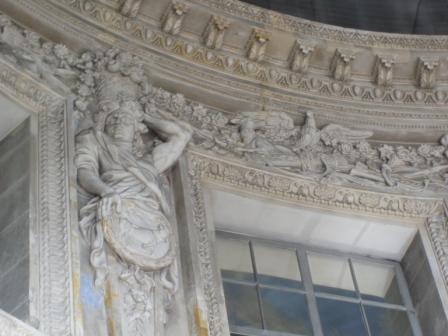The most famous fête (party) ever in France was actually a housewarming that took place on August 17, 1661. It had everything going for it – the most stunning venue, the finest food and drink prepared by the finest chef, the most beautiful music, the most dazzling entertainments, the most elegant host, and the most VIP guest list of the time – the king of France and his court. But while the party was perfect in every way, this sumptuous evening also gave the king the needed pretext to arrest his host who in his eyes had become too powerful, too wealthy, too sophisticated, in fact too everything.
Wonderfully enough, the locale where this famous – and infamous – event took place still exists today, despite the vagaries of history. The château and estate of Vaux-le-Vicomte lie about an hour southeast of Paris. If you have not yet been to Vaux, I highly suggest taking a day to visit this exquisite jewel of French architecture and history as soon as you possibly can.
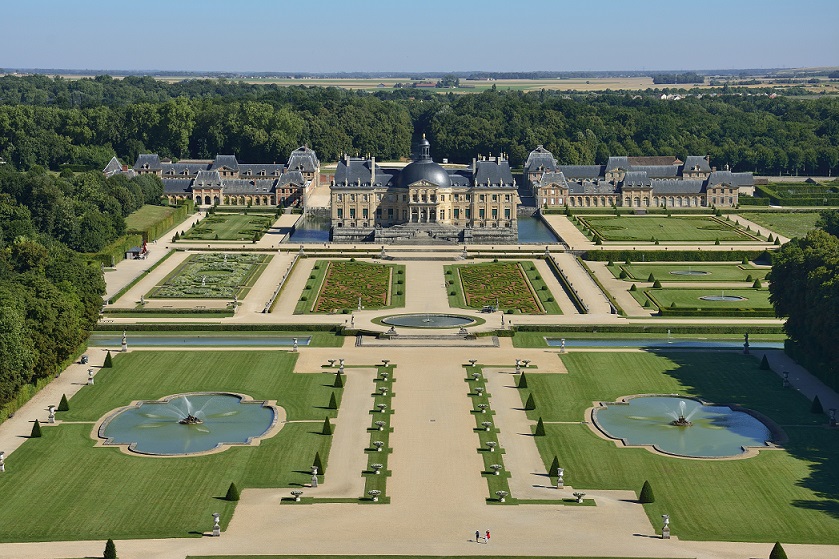
So who was the host and how did he come to offend the king? In 1653, the successful and ambitious bureaucrat Nicolas Fouquet was named the Surintendant des finances of France. Not only a numbers man, Fouquet was highly cultivated with a taste for the good life. Accordingly, he soon began to plan the construction of a château and grounds befitting his social stature and urbane nature. Fouquet had a wonderful eye for talent in every form and in 1656, he gathered together the architect Louis Le Vau, the interior decorator Charles Le Brun and the landscape designer André le Nôtre to start work at Vaux.
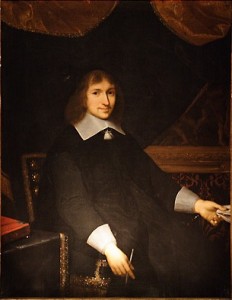
A portrait of Nicholas Fouquet
After several years of highly costly construction, Fouquet and the three artists had created a baroque masterpiece that exemplified perfection in architecture, decor and garden design. From the impressive stone façade, dome and moat on the exterior to the wondrous grand salon and rich tapestries, gilded woodwork and painting on the interior, the château and its outbuildings surpassed any castle complex that had been seen in France before – we have to remember that Versailles in its present incarnation had not been created yet.
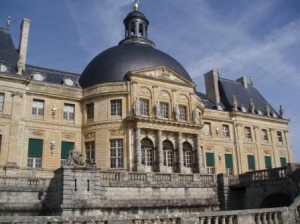
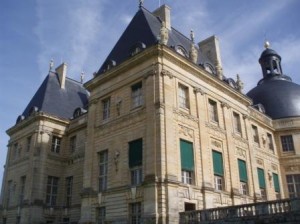
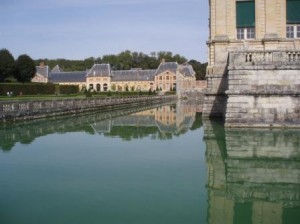
And then there were the gardens! It has been said that landscape designer André le Nôtre formalized the art of French garden design in his realization of Vaux. The use of perspectives, symmetry, pools, fountains, canals, the grotto, and embroidered topiary hedges, or parterres de broderie in French, came together at Vaux-le-Vicomte as never before.
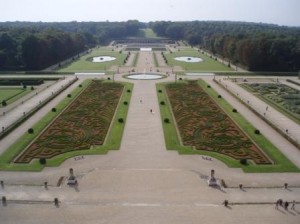
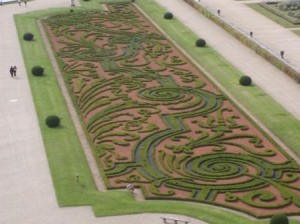
On that fateful summer night in August, 1661, Fouquet had invited the young Louis XIV to celebrate his new abode and also pay hommage to the king. But the dazzling spectacle in front of several hundred court guests only served to confirm the king’s suspicions of Fouquet’s embezzlement from the royal treasury and of Fouquet’s own ‘kingly’ aspirations. Of course, politics being politics, another of Louis XIV’s ministers and Fouquet’s political rival Jean-Baptiste Colbert had fanned the flames of Louis’s jealousy several months before. So in effect, the grand party served only to seal Fouquet’s fate and on September 5, Fouquet was arrested by the king’s soldiers.
After a lengthy trial, Fouquet was sentenced to life in prison for crimes against the king. Just following Fouquet’s arrest, Louis XIV appropriated much of the furniture, tapestries, books, statues and even some of the garden trees from Vaux which he then distributed amongst his own residences. He also decided to take the three designers Le Vau, Le Brun and Le Nôtre and put them to work remodeling his father’s hunting lodge at Versailles. Madame Fouquet was able to regain Vaux-le-Vicomte in 1673, though her husband never saw it again as he died in prison in 1680.
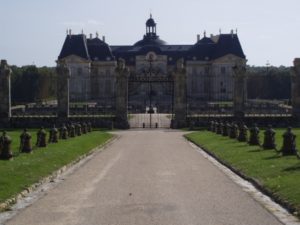
Fortunately for us today, the château of Vaux managed to survive over 350 years of tumultuous European history virtually unscathed. Currently, it remains in private hands, and the French owners continue to restore the castle and grounds to their former glory. To my mind, Vaux is the most beautiful château in France for its aesthetic perfection on a human scale. And you just can’t beat the true story behind this storybook castle – with the greatest party ever in France, the jealousy of a king and the impetus and circumstances that led to the creation of Versailles.
Vaux-le-Vicomte is open every day from early March to mid-November each year and on specific days in December and January. It is located near the town of Melun and is accessible by train, car or shuttle from Paris. More information is available on the château’s website at www.vaux-le-vicomte.com. For more information on special ways to visit Vaux-le-Vicomte up close and personally, please contact French Affaires at info.french@frenchaffaires.com.
French Take-Out ~ La France à emporter
We’ll go deeper into the juicy details of Vaux-le-Vicomte and enjoy a visual tour of its interiors in the upcoming France travel class “Magnificent Châteaux Near Paris” starting on November 4 in Dallas, TX. In this two-part seminar, we’ll explore the history, architecture, art and gardens of gorgeous French estates such as Vaux-le-Vicomte and also Versailles, Fontainebleau, Chantilly, Vincennes, Compiègne, and more. You’ll be fascinated by the personal stories and famous personages who built and lived in these glorious castles. Included in the class are comprehensive handouts complete with details on how to visit these stars of French architecture and culture – including opportunities for the kids! – plus a reading and film list for further exploration.
Date: Two Mondays – November 4 & 11, 2013
Time: 7 to 9pm
Cost: $75 per person. Advance registration by check or credit card. Please click here to register.
Location: Central Dallas Location – The Cranmer Institute, 3308 Daniel Ave, Dallas, TX 75205 – located by the SMU campus (parking directions to be provided)
